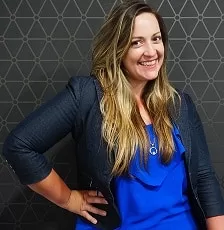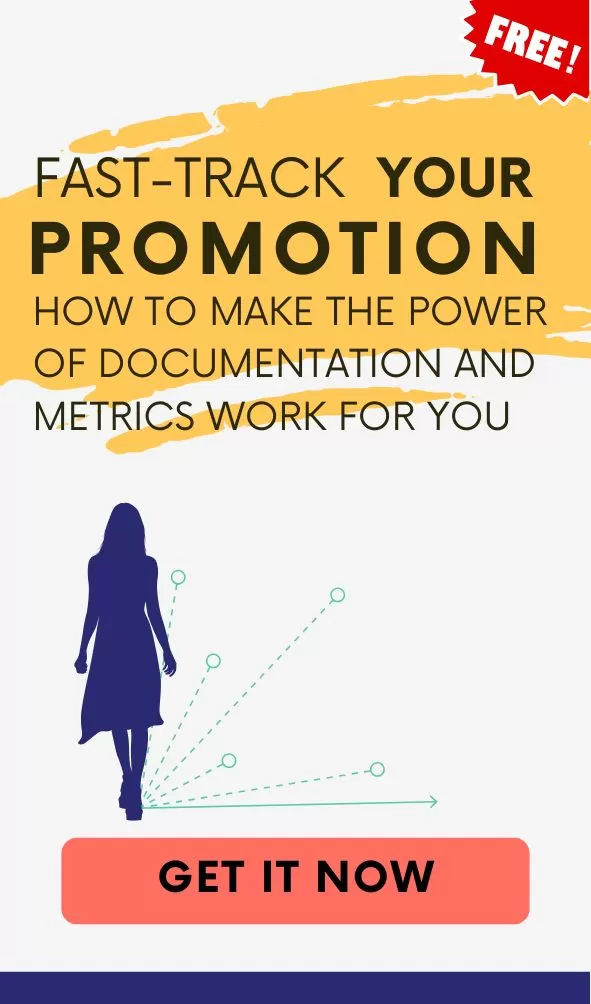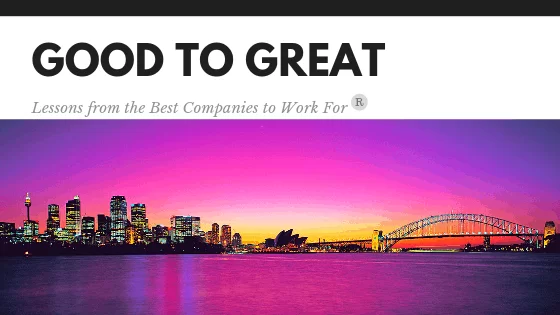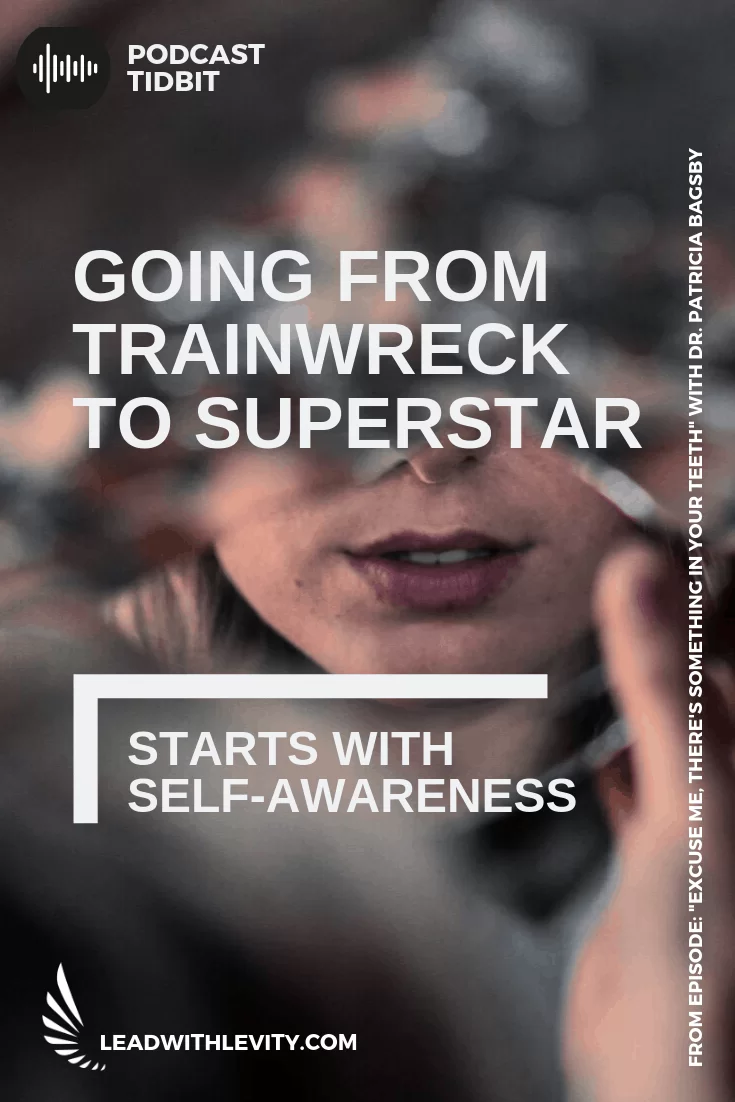Starting a new job is exciting and a little bit of a leap of faith this year for new employees. They aren’t able to walk through the building and get a sense of the people, work environment, and culture in the same way. They sort of have to go on faith that the culture is as advertised. If your company went remote this year, then you’ve been scrambling to reimagine onboarding.
So that’s what we’re going to talk about today. What can we do to jazz up remote onboarding? Does it need more seasoning, onions, a little cheese? I had the pleasure of chatting about this (sans seasoning, onions, and cheese) with David Secunda of WorkBright. WorkBright is an HR tech startup that helps companies move traditional employee onboarding to 100% remote.
In this episode, we cover:
- How to make onboarding more exciting and engaging
- How to help new employees build personal connections
- How to handle that pesky I9 requirement (a pandemic pro-tip)
Prefer to read instead?
Expand to view a computer generated transcript
Heather Walker: [00:00:00] Welcome to the Lead with Levity podcast. I’m your host, Dr. Heather Walker, and I am always excited to speak to these amazing individuals. And today we have on the line, David Secunda. David is the founder and CEO of WorkBright, an HR tech startup that moves traditional employee onboarding to a 100% remote process that workers can complete before they even arrive.
And I think it’s pretty timely to talk about that, and what we can do to make remote onboarding a little bit more fun and exciting than just here’s your paperwork.
David Secunda: [00:00:51] This was really around creating a culture of change, creating a culture of change in the startup world where, I had I’ll just say survived, years of the startup world, in environments that were not too human-centric that were not to employee-focused and that was focused
on results over all other things that they would leave kind of bodies in their wake. And in starting this company, it was really about. The fact that how we do what we do is as important as what we do and that we’re creating this culture of learning and leadership that all of these people here at this company when they go on to work at their next companies, They will be ripples of change for best practices out there.
how we, deal with lightness and levity. with various situations as they come up, as opposed to, the life and death grip that, that drives high emotion and high stress in many other startups out there.
I, I think that if you ask my employees, they, ideally, and I hopefully would echo this, like how we do what we do is as important as what we do.
Heather Walker: [00:02:50] Welcome back to the lead with levity podcast. I’m your host, Dr. Heather Walker, and I am happy to share today’s guest and his message with all of you today. We’re going to talk about onboarding remote onboarding.
they’re not even there.
Sound familiar. And we’re going to talk about how do you make it even more exciting and interesting than it already is? Hopefully, it already is, how can we jazz it up even more? my guest today is David Secunda of WorkBright.
He is the CEO of this young and up and coming HR tech startup that moves traditional employee onboarding
to 100% remote. David, I’m excited. Welcome! Welcome! Welcome!
David Secunda: [00:03:38] Hi there. I’m delighted to be with you.
Heather Walker: [00:03:41] How many cups of coffee have you had today?
David Secunda: [00:03:43] I have one in my hand. It’s cup number one. I’m on number one.
Heather Walker: [00:03:48] Oh no!
David Secunda: [00:03:51] It’s okay. It’s okay.
Heather Walker: [00:03:53] All right. good. We’ll get through this. I promise. I promise. David, you are in Colorado and how’s the weather out there right now.
David Secunda: [00:04:04] it is beautiful today. We’re in that fall season where yesterday it snowed four inches today. It is 70 degrees tomorrow. It’s supposed to be 80. we’re oscillating between the Indian summer and winter. And, that’s why we all moved to Colorado for the seasons, but they are here.
Heather Walker: [00:04:22] Wow. we have seasons too here in Austin, Texas,
David Secunda: [00:04:25] That’s what I heard.
Heather Walker: [00:04:26] a couple of a week or ago, it was around 115, and then the following week now it’s in the 70s. It’s amazing.
David Secunda: [00:04:37] it. Got it. I hear ya. I hear it’s. You just don’t change.
Heather Walker: [00:04:41] David, can you tell me a little bit more about WorkBright?
David Secunda: [00:04:46] absolutely. Yeah. Heather, I have this big smile on my face, just as you have served up that intro with okay, let’s make onboarding. Interesting. Go here you go. do your best. And, I just, it’s funny because I, a little about work, right? I started this company, gosh, I think a little more than six years ago.
And it was born out of the pain points of the last company I started that was hiring hundreds of people, that were all over the country. And it was in a regulated industry and it was really hard. and literally, I was like one of those people along with some other team members doing this.
Physical paperwork, ticking and tying, literally hundreds of forms. Typically before we would have a state auditor pouring through those files. Usually a few weeks after people started working. And onboarding, like for me carries this connotation, but like anything but fun, anything but light, because it has this historic experience of Oh my gosh, this is going to suck.
Heather Walker: [00:05:49] For the next week or however many days it is. And then you can rest and relax.
David Secunda: [00:05:54] it did come in fits and sprints like that. And, quite frankly, I think it sucked for employees too, because the typical experience would be, you would get offered this job and genuinely have excitement, enthusiasm, and upliftment, and be looking forward to your first day and you go into your first day of work.
And the very first thing. That is typically happening is being sequestered into a fluorescent-lit room with a stack of paper and being like, welcome. Here you go. Write your
Heather Walker: [00:06:27] Can you read,
David Secunda: [00:06:29] times,
Heather Walker: [00:06:29] Can you read? Can you write??
David Secunda: [00:06:31] Exactly, exactly. And fill out the same information over and over. it was really out of, this personal experience that I founded this company that was all about.
taking away that burden, and really, I guess redelivering the enthusiasm of the first day of work for employees. And redelivering the reason that we became HR professionals to those in the industry. many people, many of my colleagues got into this world of HR. Because we love people.
we like working with people. We love that connection. We feel like helpers and those sorts of things drew us into the industry. And then by and large people find out as, as they do in the world of HR, that probably 80% of their time is spent in paperwork and ticking and tying things. And it’s just not, it’s not the rewarding outcome that they were hoping for.
And yeah. I am just honored to be in this place where we’ve created the solution that returns the fun to HR and returns that first day to the employee by taking all of those pieces that we’re burdensome, no fun. And really what we’ve learned here in a time of the pandemic.
There’s no reason that we should be doing those things in person. And we’re freeing that employee to do it on their own time before they come to work. We’ve had 600,000 people utilize WorkBright to onboard, and 70% of them do it completely
from their smartphone because that’s how they want to do it. And they also don’t do it the way that you would if you walked into an office where you sit down in a room for several hours, we look at the statistics and we see people onboarding over two or three days. In all different locations. They’re like, Oh yeah, my passport that’s under my bed in that shoebox.
And my direct deposit information that’s in this other room. And they go through it at that, at the pace of life, as opposed to, the drudgery of the first day. I know it’s a long-winded answer, but, it’s really about just returning to these people, to people connection, and delivering that both for employees and employers.
when we talk about onboarding, are you talking about, onboarding can take different phases and timelines and all that. w at what point are you talking about? yes, you are hired. We want you to what point.
Yeah, that term is wildly undefined, and it can be thought of as anything from an employee’s first day, to a point that begins when you decide to hire someone and ends, six months into their employment. it is a very broad term. we look at it, it just having different pieces to it.
and for our conversation today, I think it would be helpful to divide it into two pieces. And one is just that the tactical stuff you got to get done, it’s all of the government forms, the proprietary forms. If you need copies of driver’s licenses or certifications or licenses, yet any of that sort of stuff that has to be in place.
For you as an HR person to be able to go to sleep at night and feel like you have your back covered. that’s the tactical onboarding. And then the other side of this, which is vitally important as well as the cultural onboarding. It’s this question of what do you do to truly bring on a team member and to, build them into the culture and immerse them in the culture and allow them to become kind of part of that team. I would say when we look at the tactical side of things, there’s a bunch of stuff that we could talk about there. that’s where WorkBright has cut its teeth, to speak.
That’s what we do well. I would consider it the most kind of mundane part of onboarding. I laugh about it now, because I have some, some excitement when looking at what sort of mundane tasks we can eliminate for people. we’ve done demos and had HR folks literally in tears on the demo.
Cause they’re like, Oh my God, I hate that part of my job. and now it’s automated and we’re leveraging artificial intelligence and we’re doing, the best things that technology can do. But we’re not doing those things that people do best. and we’re serving that up in a way that, employees and employers get re-engaged with each other overall.
I’m happy to talk about either side of that. And, you go in a bunch of different directions.
Heather Walker: [00:11:12] Yeah, really important that you’re, that you have something that handles that tactical side because that’s where people get weighed down to the point where they aren’t able to think strategically about anything else because they’re constantly focusing on paperwork and that’s great.
I’m curious about the cultural side of it. and what recommendations do you have for people? what can people do to make onboarding remote employees? More exciting?
David Secunda: [00:11:44] Okay. First of all, where’s this whole thing going with this concept of remote onboarding? and what I will say is we formed this company focused on employers who had distributed workforces. They just had people all over the place and they didn’t necessarily have, HR administrators in all these different locations.
they were forced to create some sort of either. A homegrown or third-party solution to get this tactical onboarding stuff done. Now in the time of the pandemic, the entire game has changed and HR managers immediately got scrappy and said, “Oh my gosh, we have to hire some folks.
They can’t come into the office. How are we going to do this? We’re going to need to do this remotely.” And they’re either looking for solutions like WorkBright or putting other things together that might have. some riskier consequences. Like you can get it done and do it via email, but that’s considered a very, insecure mechanism to do that onboarding.
But now what we’re hearing as we’re getting into it, and some offices are starting to open back up is the HR professionals are saying, “Why did I ever do onboarding in person? This is something that I’m never going back to.” And just as the same, many of us will not get on planes for a one-hour meeting across the country ever again.
I think HR managers are saying, wow, I’m rethinking. Initially for reasons of health and safety, but now for broader reasons what it is that is best to do in person, but what it is to leverage technology for, and allow employees to do on their terms. And the tactical onboarding side of that I think is here to stay.
It’s something that people are being pushed into. and why we’re seeing huge numbers of people looking at work. right now. but something that is going to be here forever and ever, because it’s taken away this kind of this pain point now the cultural onboarding side, Is interesting in this time of the pandemic. here at work, right? For example, the last four employees that we’ve hired, I have still never met in person. they have been, recruited onboarded, oriented, and have started working and still, we have not crossed paths personally. And there is this need to not only get the tactical stuff done, but to engage in, as I said, bringing them into the fold and also learning what culture add they’re going to bring to the organization and, infusing that through the rest of the team as well.
Heather Walker: [00:14:19] …because right now, sorry, David, we have companies who are onboarding people remotely and in some ways, they have to come on in faith that there is a company with all of these people and that the culture is what you say it is because I’ve only seen my manager. I’ve only seen the people on my team or a few key people outside of that which is a different way of onboarding even than before. maybe it was like that before, but…
David Secunda: [00:14:54] I think you’re right. When you say it’s this leap of faith and, in some ways, it’s beholden on us as employers to help close that gap. I don’t think we can have a realistic expectation that we can serve up our positions and our company in the same manner. As when people would come walking into our office and have this whole experience of brand immersion and people immersion and expect them to have that same understanding.
In an online environment without really doing some heavy lifting. if you were, for example, to go look at the WorkBright, careers page, you’re going to see a video now of employees talking about why they liked it. Working at WorkBright and what draws them in. And you’re going to see photos of all sorts of, days in the life, but people at the company, and you’re gonna see, screenshots of zoom meetings and, all of these different things that in the past had been informally transmitted, somewhat through interviews and other situations that are just.
Needing to be more deliberately, placed in an accessible, position for employees to, consume as they’re looking at the company. And then when you’re moving to this point of hiring somebody, you decide after the interview process “Yes. It is somebody that we want
,” then I would say this… leaning into this cultural onboarding piece, in addition to the tactical one needs to step in gear. And what I’ve been talking to our customers about in that mode is to think about what you do. You did in a non-virtual world, too. To achieve that informal or formal culturally cultural onboarding piece, like to go back to thinking about what worked well for you in that environment, and then to take those bits and pieces and then move them into the virtual world to the best of your ability.
For example, our orientation period: We have new employees at this company do a pretty detailed survey about what worked and what did, and before the pandemic, something that employees loved is they had this opportunity in their first two weeks, too.
Meet every single person in the company for coffee. we would have these little morning sessions where the new employee and two others would sit down together. And, we give them a kind of a conversation starter question, but they would just, it would all appear on their calendar and they just said, wow, this was amazing for me, not just to meet the people in my department, but to have this like little personal connection with every single person in the company. now that we’re in the world of virtual natures, we have just switched that to a virtual nature. we still do those two-week coffees.
Heather Walker: [00:17:45] That’s true.
David Secunda: [00:17:46] If they’re 15-minute meetings on Zoom where we’re buying the coffee and giving a prompt and we’re having the same sorts of, of coming together around, around those sorts of things.
In the first week of onboarding with folks, we do, a person. We would do lunch for that employee. And now we do a virtual lunch, and we do a jeopardy game where the new employer employees have all this information. That’s translated into a game of jeopardy that the rest of the company plays about them and their past, And, and it, it’s not necessarily reinventing the wheel. It’s more reinventing the vehicle of delivery for those, those culturally onboarding, those cultural onboarding moments.
Heather Walker: [00:18:28] I love that concept and the way you put it. we’re reinventing the vehicle of delivery, figuring out what you did well before, what resonated with people and then, how can we do that online? That same thing.
David Secunda: [00:18:43] Yeah.
Heather Walker: [00:18:44] Nice. Okay. Okay. Are you noticing any trends? like onboarding trends or things to keep in mind with different groups?
David Secunda: [00:18:56] Yeah, okay. I’m going to go back into the tactical weeds here for a second, just for a moment because it is this huge trend that we got to talk about here. Cause when you talk about remote onboarding to anybody who works in the HR world, the first thing they do is raise their hand and go, what about the I nine form?
that the person has to come in and show me their work authorization documents. I need to sign section two and like what happens with that? And I don’t feel like I’m doing my job without talking about what is the trend in I nine overall. First of all, at the start of a pandemic. ICE relaxed those requirements and said, okay, for the first time you can now you work authorization docs electronically.
You can take a look at those new employees, let’s say passport or driver’s license and social security card via a scan via, fax even via Skype. Although you have to. Record it cause you have to have a physical record of it or at work digital record of it. and then you go ahead and sign section two is the employer, but you write in the additional information section, physical delay of documents due to COVID-19.
And this is only relaxed for those employees that are being hired and are working remotely for. Both. Most of us, that’s almost everyone right now, but there are, they are, they’re temporary. Basically. They’re saying at some point in time, we’re going to flip that switch, right? They’re only pushing it forward 30 days at a time into the future.
Sure. At some point, they’re going to say, okay, game change. All of those employees for us, some of our employers hire hundreds and thousands of employees. now you have to go back and physically see all of those documents. And you have to resign a new section too. the trend that we’re seeing is the use of what’s called an authorized representative, a remote authorized representative.
this allows the company to designate any third party to sign section two. And it’s the last section that has been tethered to an in-person part of the tactical onboarding, which is now being set free, And you can allow an employee to select something, one, anyone who’s over 18 years of age, it could even be a family member, and they can review those work authorization documents and sign section two.
And then the I nine process. Is complete. The thing I will say about that is we’re seeing this trend of everyone moving towards that. Some are doing it in a very manual process. if they’re hiring, single-digit numbers of folks a month, they’re talking that third party through and helping them look at the documents with them and make sure they’re proper documents.
At work, we’ve rolled out a technology solution that uses artificial intelligence and optical character recognition to streamline that entire process. But whatever you’re doing, the trend is that people using an authorized representative that those employees don’t have to walk into an office some point and, and hand over those documents.
They can do that remotely. That is certainly one really big trend that we’re seeing out there.
Heather Walker: [00:22:03] I guess by the trend, I meant…
David Secunda: [00:22:04] …not that… something different? Okay. All right, Heather, give it to me. what did you want?
Heather Walker: [00:22:1
9] Oh, okay. millennials, different groups, any trends in, or even recommendations in how we can ensure that we’re onboarding people? I, first of all, I love that you use AI. And the technology allows you to create responsive programs that give people what they need and meets them where they’re at.
It, at least it has that potential. you know, when we’re talking about diversity, we’re talking about inclusion, we’re talking about like we have people who are not necessarily all that tech-savvy. having to go from I’m used to coming in and filling out papers and having someone answer all my questions.
And now I don’t have that anymore. I have to figure out this darn, this application, like, how do you balance that?
David Secunda: [00:23:18] Yeah. I think that those are all great questions that, that those that are hiring, especially at volume are coming up right against. And the short answer is you can’t just take what you’ve done in a paper or an in-person world, and just put it on online and think it’s going to work because as you said, You’re not sitting there with that employee, necessarily, in an actual sense.
And you need to provide all of that guidance and that direction and that simplicity and that automation in a way that, and this is why I will tell you if you do it successfully, this is why employees like it much better because it’s much. Easier. It’s much simpler. if you’ve ever sat down and somebody put an I nine paper form in front of you, it is intimidating.
It is a scary experience. It’s Oh my gosh, what do I even do with this? What is this list? A, B, and C. I just like, yeah. It’s like advanced. Yeah, it’s a lot. whereas in an electronic world, if you’re picking a provider, I will say, like work bride wears another quality provider. You’re going to get a nine experience that parses it down to more of an interview.
It’s more of what an HR person would ask that person if they were sitting there and walking them through and then, putting the information where it needs to be automating all those things that need to be filled out that nothing gets missed, and making a much better, faster. And simpler experience for those that are engaging with it.
that would be from that like tactical, actual form side is you want to be looking for responsiveness and smart forms and, automated optical character recognition that things are getting filled out for the employee. And the employee should only be asked to put in one piece of data at one time, it should the gate across every other place that it’s ever needed.
those are the. Those are the types of things that you want to see there. The other thing is that we serve a very diverse workforce and a huge part of that is blue-collar. is the actual, Accessibility through devices. And what we find is that more and more, the moment universal tool that employees will have is a smartphone. it’s certainly much more common than a laptop and way more common than a fax machine or a scanner or anything like that. you can count on the smartphone. But you can’t count on everyone carrying around like an iPhone 10. Okay. It’s like you need a solution. And as I said, 70% of the hundreds of thousands of people have done onboarding through work.
Just through there. Their smartphone by their choice. you need to be able to make sure that people are not limited by the device that they’re using. You want to be able to be used as seamlessly on an Android and Apple device, a tablet, with the latest operating system, and going back as far as you can.
And you’re looking for solutions. And again, I think Workrite is one of those that. It doesn’t necessarily go on the employee-facing side, have the latest and greatest technology. That’s only available in the most recent browser because we want to make it accessible. We want to make it, that employees can use it who has an old phone or one that’s not on a new system or anything like that.
That is certainly another big piece of it. and of course, another piece in the, and this is pre onboarding, but then the hiring phase, this is where the, where the rubber hits the road, as far as the initial diversity work that is happening in the industry is concerned.
And, I’ll just double down on the import of putting that commitment. To diversity in writing up in front where employees can immediately consume it. And, and understand what the, What the culture is looking and what the commitment to diversity at that company is in a very plain and clear way at the front end of it.
And as those of you who are listening, who are in the recruiting world, probably know the best practice is also it, at least that those initial reviews of, Applications or resumes are as blind as you can make them. that you’re not looking at names, you’re not looking at other identifying information that, implicit or explicit bias can sway you in one direction or another.
And certainly, technology can come into play on that as far as providing that ability to, blind review those documents on the front end. All of those are just touching on a few of the things that you’re looking for, but those are some trends that we’re seeing on the employer side, as far as commitment to diversity and operationalizing that, as well as trends on, the actual technology itself and make sure it’s accessible to all those folks that you want to get to work as quickly as possible.
Heather Walker: [00:28:24] That’s helpful. And David, I think we’re getting close to the end of our time today, but I wanted to ask you when you got started with WorkBright and I’m sure it’s something that you revisit from time to time when you got started, what was the kind of culture that you wanted to develop and create with your teams?
David Secunda: [00:28:53] it’s such a wonderful question for me personally. I’ll tell you, this is my sixth startup, I have been…
around the block a few times and, and I love it. The startup environment. but I wasn’t in a place where I had to do another company. I, the last company I started is still running with hundreds of employees and this going concern, and I love that company as well.
And. This was really around creating a culture of change, creating a culture of change in the startup world where, I had I’ll just say survived, years of the startup world, in environments that were not too human-centric that were not to employee-focused, and that was focused
on results over all other things that they would leave kind of bodies in their wake. And in starting this company, it was really about. The fact that how we do what we do is as important as what we do and that we’re creating this culture of learning and leadership that all of these people here at this company when they go on to work at their next companies, They will be ripples of change for best practices out there.
and that’s everything from we’re pursuing our B Corp certification right now, to just how we, deal with lightness and levity. with various situations as they come up, as opposed to, the life and death grip that, that drives high emotion and high stress in many other startups out there.
I, I think that if you ask my employees, they, ideally, and I hopefully would echo this, like how we do what we do is as important as what we do.
Heather Walker: [00:30:49] Thank you. wise words. if anyone wants any information about WorkBright, where should they go?
David Secunda: [00:30:57] we do have this website, it’s WorkBright.com and, it is all there. And we’re super responsive. It’s a great blog too, with a ton of information on both cultural and tactical, remote onboarding to go over many of the things we talked about today.

David Secunda is the Founder and CEO of WorkBright, an HR tech startup that moves traditional employee onboarding to a 100% remote process that workers complete before they arrive. He has led numerous organizations including Avid4 Adventure (Founder & Chairman, outdoor adventure camps), PlanetOutdoors (Founder & CEO, online outdoor retailer), and the Outdoor Industry Association (President). He also worked as an Entrepreneur in Residence at Mobius Venture Capital and Sequel Venture Partners. He is an active mentor in the business community at Techstars, MergeLane and the CU Leeds School of Business, and has served on the boards of Entrepreneur’s Organization Colorado, RMC Health, The SCA, and was a founding board member of Leave No Trace. Additionally, he was the Governor appointed Chairman of the Colorado Department of Human Services Licensing Advisory Committee.
About the Podcast
The Lead with Levity podcast is a show for leaders who care deeply about what makes/breaks the employee experience. Our guests are dynamic researchers, practitioners, consultants, and business leaders. We cover foundational elements that are needed to avoid forcing the fun. We also invite lively managers who lead with levity to show us how it’s done. Thanks for joining us on this journey.
